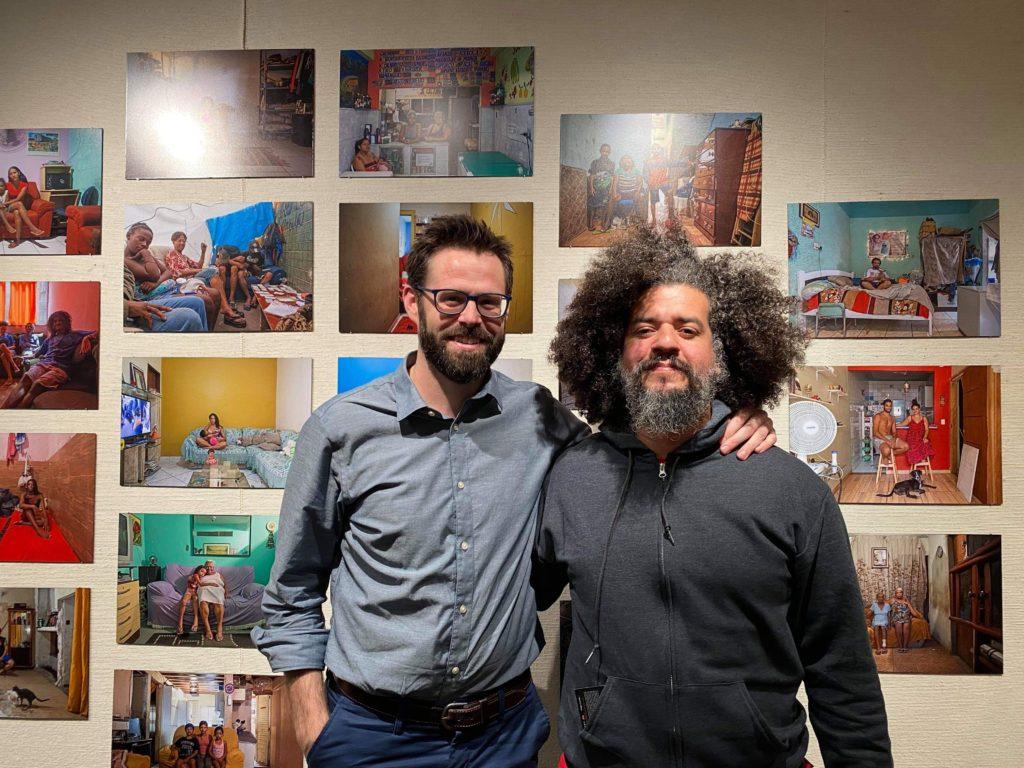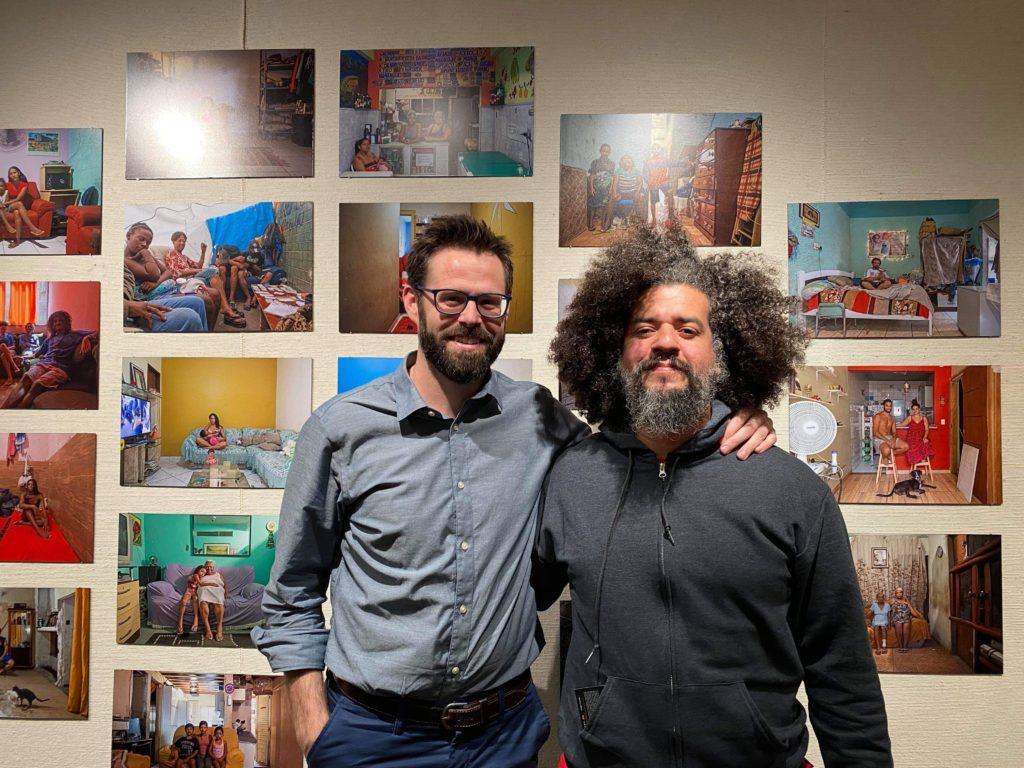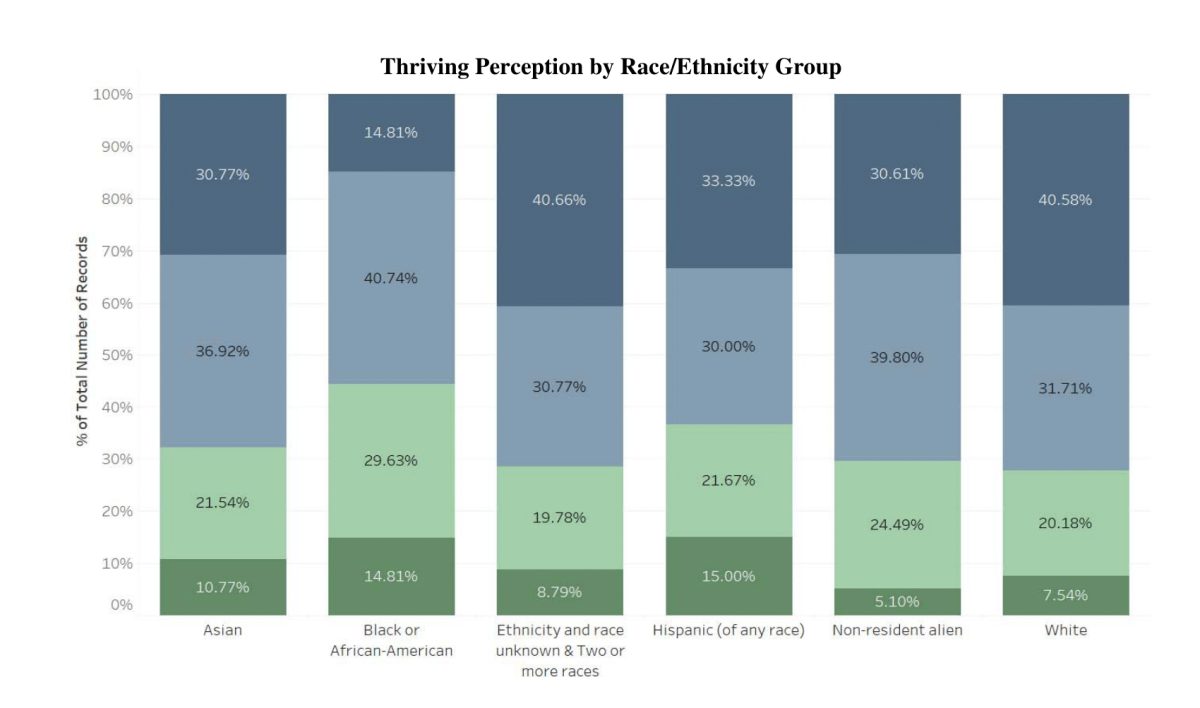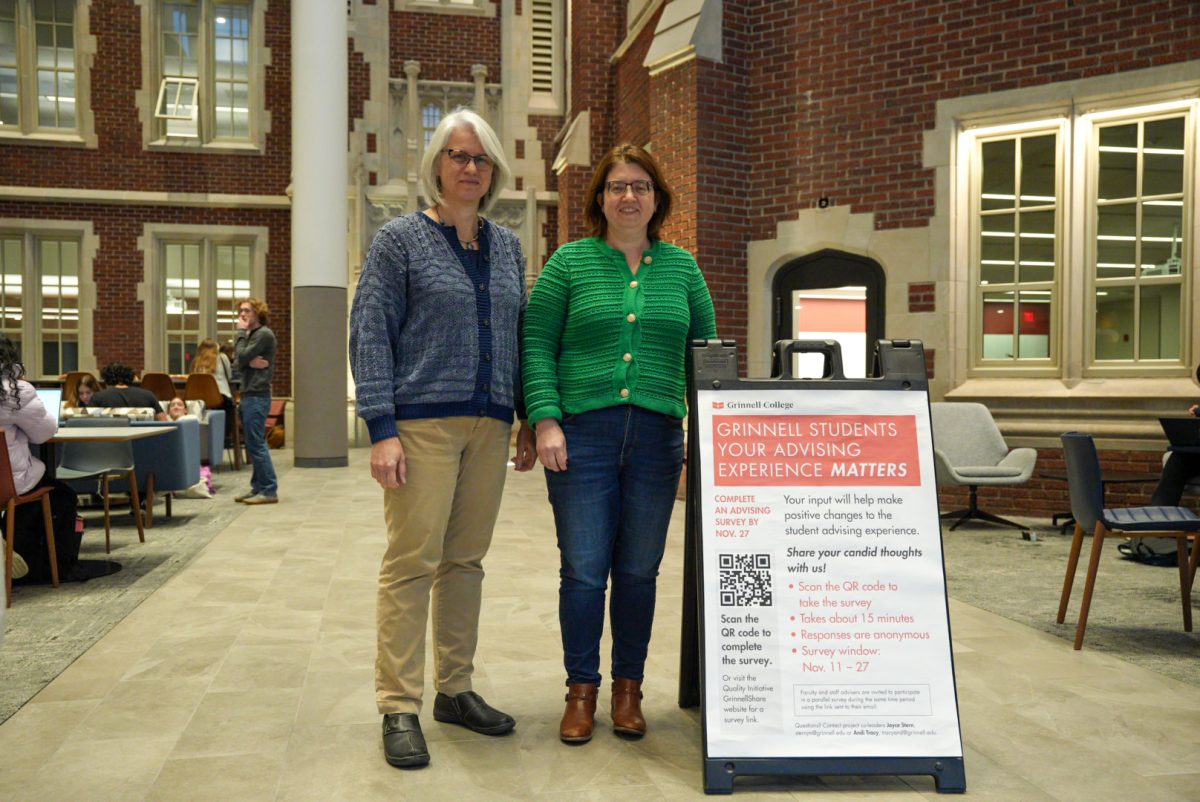By Montserrat Castro Gomez
castromo@grinnell.edu
The basement of Burling Library currently holds an exhibition of a series of photographs featuring an internal and external view of Complexo da Maré, 16 separate but contiguous favelas in Rio de Janeiro, Brazil.
The exhibition, funded by the Watson Institute for International and Public Affairs at Brown University, was brought to Grinnell by Professor Nicholas Barnes, political science, and produced by Brazilian activist Henrique Gomes da Silva. In addition to the photographer, Antonello Veneri, Barnes and Gomes da Silva worked in collaboration to put together the project, which began in 2013.
From 2012 to 2015, Barnes lived in Rio de Janeiro and conducted research on public security, local governance and development, during which time he met Gomes da Silva and moved to Maré. He explained how he watched the photography project between Veneri and Gomes da Silva unfold while he worked on his own research. “They started having conversations about representation and visibility, … because in general stories about favelas are about violence or about poverty. So originally the project was about sort of showing another side of favelas,” said Barnes, sitting alongside Gomes da Silva, who visited the College this week and was present at the opening of the exhibit on Tuesday, Nov. 5.
The main part of the exhibition, spread throughout the wall opposite the Print Study Room, consists of a collection of 30 photographs that portray the internal life of Maré—residents of the favelas inside their homes, sitting with family, smoking, watching T.V., breastfeeding or participating in other quotidian routines.
Gomes da Silva, a resident himself of Complexo da Maré, explained that most of those photographed are people he knows well. During the opening, he stood next to the photographs and introduced the people in them. He pointed to one featuring a family standing outside the entrance to their home and explained that it had been taken right in front of a police operation.
This speaks to the other 30 photographs in the exhibition, taken on the streets of Maré between 2013 and 2015. Beginning in April 2014, before the World Cup that took place in Rio, Maré was occupied by 2,500 soldiers as part of a public security program called Pacification, intended to “retake control of Rio’s gang-dominated favelas,” as stated in the exhibition. These photographs intend to show the external part of Maré life during this time of police brutality and domination.
In conversation about innocent people dying in the crossfire of police drug operations, Gomes da Silva said, “To be honest, this has happened always. It’s a historical relationship. … The United States created that universe in which “drugs” is a person and you have to fight this person. So when [that idea] reaches Brasil, repressive mechanisms of the State, the police, [are made] in order to contain that. … In a favela like Maré, in the last 3 years, more or less 90 people have died because of that excuse, that lie.”
He stated further that the police occupation during that time was due more to the fact that during the World Cup, the Brazilian government wanted to contain what happened inside favelas—keeping them outside of the public and media eye.
Another important part of the exhibition touches on social justice and violence. In the right corner, there are pictures of social mobility as well as a picture of Marielle Franco, a former resident of Maré. She was a sociologist and feminist activist who served as city councilor for Rio de Janeiro. On March 14 of 2018, Marielle was shot inside her car, a murder for which Jair Bolsonaro, Brazilian president, is currently under investigation for participating in. This was an event that deeply shocked the population of Maré as well as the country as a whole.
“Marielle’s murder… it propelled [many] fights, but in all it was a very tragic occurrence where many of the women who were alongside her didn’t have the possibility to grieve. … Six hundred days have passed since her death and we’re still in that process of knowing who sent to kill her,” says Gomes da Silva. “I think it’s very important to understand that this is a fight concerning women of favelas, black women, in relation to city space, which has always been complicated.”
The exhibition raises questions not only about visibility of favelas but also about the role one can take in understanding them. “I think it’s a very beautiful show, very colorful, but [it] also has a lot to do with these notions of social justice when it comes to how we think about urban poverty, structural racism, policing, public security, drugs,” said Barnes. “Avoiding topics of poverty or violence would be like purposefully hiding those aspects of daily life that is very much a part of living in Maré.”
For Gomes da Silva, it’s about how spectators of the show can use their privilege. “I’ve been here for three days, and I have been so surprised by the space, by the privilege. Talking about … my standpoint as a favela resident in Rio is important for people here because … even though the majority of people here are not poor and are not black, they can be anti-racist. … This university is that place that’s discussing the world,” said Gomes da Silva. “It’s not about putting someone in your place, but about how to make that person understand that place.”























































